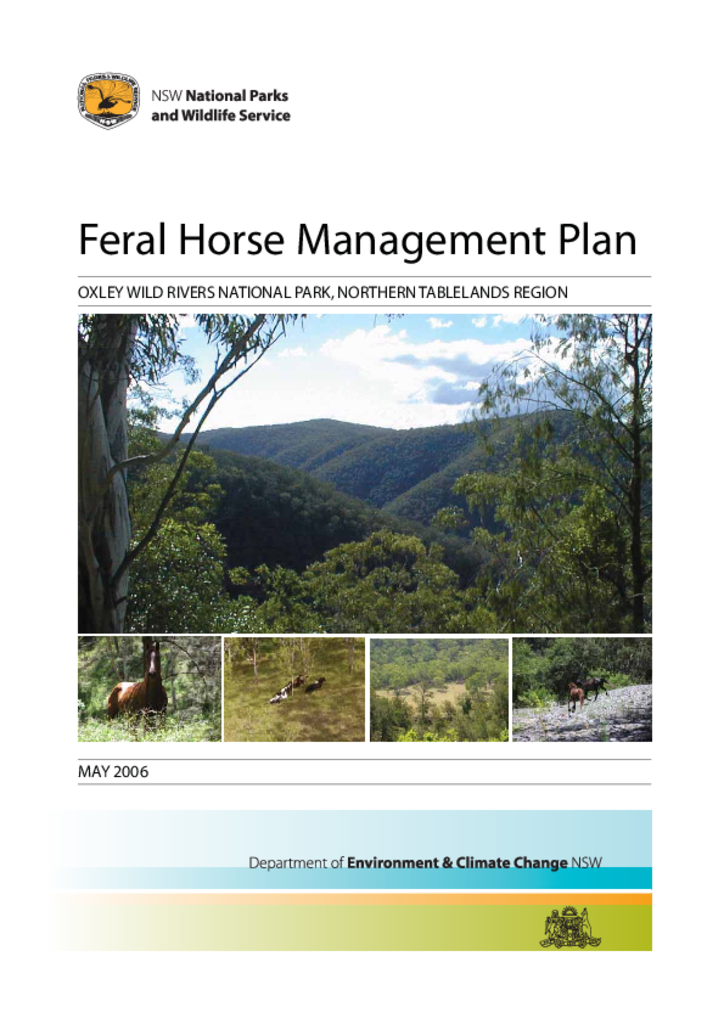Feral Horse Management Plan: Oxley Wild Rivers National Park
Two areas within Oxley Wild Rivers National Park totalling over 81,000 hectares, have been declared wilderness under the Wilderness Act 1987. Wilderness areas are large natural areas of land that, together with their native plant and animal communities, are essentially unchanged by human activity. These areas contribute to the long-term protection of biological diversity and serve as scientific reference areas.
Feral horses occur in the gorges of Oxley Wild Rivers National Park and on some adjoining private properties, primarily along the river flats but also on adjacent gullies and ridges. The horses pose a threat to the conservation values of the park, water quality and public safety as well as impact agricultural enterprises of adjoining landholders.
The key objectives of the plan are to:
- conserve and protect the natural values of the park by removing feral horses
- ensure the park remains free from further feral horse impact
- provide for the humane capture, handling and removal of feral horses from the park
- identify options for the appropriate disposal of the feral horses once removed from the park.
The NPWS recognises the wide range of views within the community about the management of feral horses within conservation areas. The plan includes details of a public consultation that gave the public the opportunity to have input into the management of feral horses in Oxley Wild Rivers National Park. Consultation with neighbours and special interest groups will continue, as will the input from the Oxley Wild Rivers National Park Feral Horse Reference Committee.
This plan examines the range of horse management methods available and recommends a combination of control methods that meet the key objectives for the removal of feral horses from the park. The preferred capture method initially is trapping in paddocks and/or yards, using feed-based lures and, where applicable, 'coacher horses'.
Detailed protocols are included to ensure that the highest standards of animal welfare are maintained throughout the operation. This plan also sets out a method for evaluation and monitoring of the program.
Related documents
